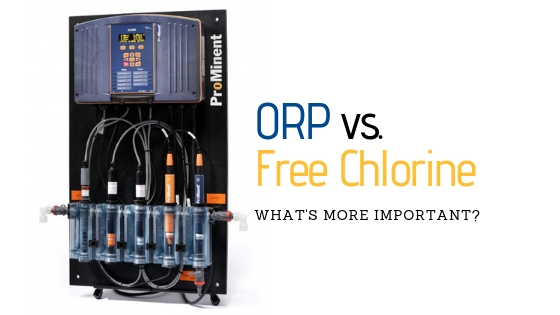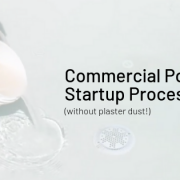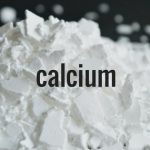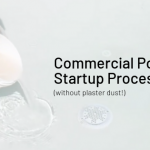ORP vs. Free Chlorine: Which is more important?
Pool sanitization is essential
Swimming pools (especially heavily used public pools) can have serious demands put on them. Keeping water sanitized is paramount to people’s health and safety, but it is not always easy to do. Disease outbreaks like cryptosporidium can happen, and people sometimes get sick. Thankfully, chlorine is an excellent sanitizer. And chlorine is easy to measure in water. We can test free chlorine, total chlorine, and from those two, we can calculate combined chlorine. But how do we know if the chlorine we have is effective in our water?
We measure chlorine’s effectiveness in real time using oxidation reduction potential (ORP).
What is ORP?
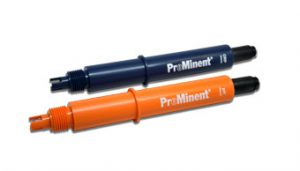
ORP and pH probes
ORP stands for oxidation-reduction potential. ORP is a measurement, in millivolts (mV), of the water’s potential for oxidizers to steal electrons from another substance. In the pool industry, chlorine is usually the primary oxidizer, and contaminants like metals, ammonia, and non-living organics are the targets of oxidation.
ORP is measured by a probe in a small sample of flowing water, usually next to your chemical controller. An ORP sensor consists of an ORP electrode, and a reference electrode. Basically a signal is sent between them which determines the potential speed of electron transfer. In other words, the oxidation and reduction potential. So let’s quickly discuss what oxidation and reduction mean, because “oxidation-reduction” are not the same thing; they are opposites. We get the following two definitions from this source.
What is Oxidation?
“Oxidation is the loss of electrons by an atom, molecule, or ion.” Often, the lost electrons are replaced by oxygen.
What is Reduction?
“Reduction is the net gain of electrons by an atom, molecule, or ion.”
This means that electrons transfer from one thing to another. The rate of electron transfer is measured in millivolts as ORP.
Since electrons (e-) have a negative charge, when they are stolen by an oxidizer like chlorine, they reduce it. Chlorine is reduced to Cl-, which is a chloride ion. Chloride can no longer oxidize, because it cannot attract more electrons.
Free Chlorine
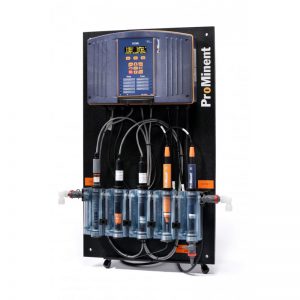
Advanced chemical automation controllers like ProMinent’s DCM5 can measure ORP, chlorine levels, pH and more.
Every certified pool operator knows to measure free chlorine. Operators should also measure total chlorine and calculate combined chlorine. Such information gives operators an idea of the sanitizer levels in their water, and can adjust accordingly. Say there’s a swim meet with a much higher-than-normal bather load. It will most likely take more chlorine to accommodate the demand. Even if you’re treating the water with enzymes, chlorine still has contaminants like ammonia to oxidize…so measuring chlorine levels is important.
Nowadays, quality chemical controllers can read chlorine levels and calculate combined chlorine automatically, as well as measure ORP, and control both ORP and chlorine levels as needed.
But without knowing the ORP, we don’t know how effective the chlorine is. That’s why we strongly suggest measuring and documenting both ORP and chlorine levels. We would argue both are important, but of the two, ORP is more important. Your pool can have 1.0 ppm free chlorine and 800 ORP with the use of enzymes, UV/Ozone or HDO. We have seen it happen. We would argue that’s better than 4.0 ppm chlorine and the same 800 ORP. If less chlorine has the same sanitizing and oxidizing power as more chlorine…why would you want more than you need?
Ways to optimize pool sanitization
You know by now that we manufacture NSF/ANSI-50 Certified enzymes to break down and remove non-living organics. With enzymes, chlorine has less carbon-based bather waste in the pool to oxidize. Less oxidant demand means more residual chlorine to conquer other contaminants, so on and so forth. Enzymes help optimize pool sanitization, water clarity and overall water quality.
Secondary sanitation systems like UV an Ozone also help chlorine. There are secondary oxidation systems like Hyper-dissolved Oxygen (HDO) and Advanced Oxidation Processes (AOP). With the exception of HDO, these systems are point-of-contact systems that only work with the water they touch, which circulates through pipes in the pump room. Enzymes and HDO are out in the pool alongside chlorine the entire time. The bottom line is this: pool sanitization is critical in swimming pool management, and the ORP is the best metric to measure sanitation power. If you can have great ORP with a minimal amount of chlorine, that’s the best of both worlds.

